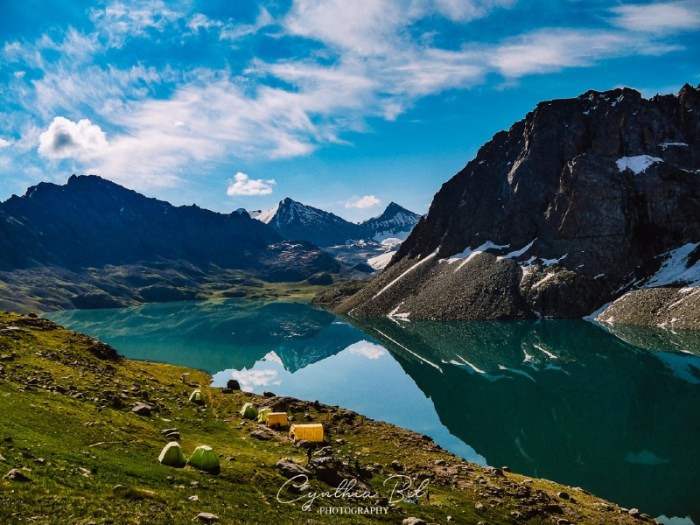House of the Wannsee Conference: A chilling glimpse into the darkest period of European history. This meticulously researched account delves into the planning and execution of the Holocaust’s systematic extermination, offering a profound look at the minds behind the horrific scheme. From the historical context leading up to the fateful meeting, to the chilling details of the Wannsee Protocol itself, we’ll explore the motivations of the participants and the lasting consequences of their decisions.
The conference, held in a seemingly ordinary building, became a symbol of unimaginable evil. The agenda, meticulously crafted, laid out the blueprint for the genocide of millions. This detailed examination, through primary sources and historical analysis, sheds light on the human capacity for both unspeakable cruelty and profound resilience.
Historical Context of the Wannsee Conference
The Wannsee Conference, held in January 1942, stands as a chilling testament to the darkest chapter in European history. This clandestine meeting, orchestrated by Nazi Germany, finalized the systematic planning and implementation of the “Final Solution” – the genocide of European Jews. Understanding the context surrounding this horrific event is crucial to comprehending the scale of the atrocities committed.The seeds of the Holocaust were sown long before the Wannsee Conference.
A confluence of factors, including the rise of Nazism, anti-Semitic propaganda, and the escalating political tensions of the 1930s, created a climate ripe for genocide. The Conference itself represented the culmination of these factors, solidifying the Nazi regime’s commitment to eliminating Jews from Europe.
The Road to Wannsee: A Timeline of Events
The following timeline highlights key events leading up to the Wannsee Conference, illustrating the escalating hostility and persecution of Jews in Europe under Nazi rule.
| Date | Event | Significance |
|---|---|---|
| Early 1930s | Rise of Nazism and the Nuremberg Laws | These laws marked a crucial turning point, stripping Jews of their rights and citizenship, fostering segregation and discrimination. |
| 1938 | Kristallnacht | This violent pogrom against Jews across Germany and Austria signaled a significant escalation of persecution, showcasing the Nazis’ increasing brutality. |
| 1939 | Invasion of Poland and the start of World War II | The war provided a cover for the Nazis’ genocidal plans, enabling them to expand their reach and control over occupied territories. |
| 1941 | Operation Barbarossa and the invasion of the Soviet Union | The invasion of the Soviet Union brought millions of Jews under Nazi control, expanding the scope of the planned extermination. |
| January 20, 1942 | Wannsee Conference | This conference formalized the “Final Solution,” outlining the logistics and implementation of the genocide. |
Key Figures and Organizations Involved
The Wannsee Conference was a coordinated effort involving various high-ranking Nazi officials and organizations. Their roles were instrumental in the planning and execution of the Holocaust.
- Reichsleiter Heydrich: The chief architect of the “Final Solution,” Heydrich presided over the conference and directed the implementation of the extermination plan.
- The Reich Security Main Office (RSHA): This organization was responsible for gathering intelligence and coordinating the logistical aspects of the genocide.
- Other Nazi officials: Numerous high-ranking officials, including representatives from various government ministries, attended the conference, demonstrating the broad-based support for the “Final Solution.”
Political and Social Climate in Europe
The political climate in Europe during the 1930s and early 1940s was characterized by rising nationalism, economic hardship, and political instability. These conditions provided fertile ground for the rise of extremist ideologies like Nazism, which exploited existing tensions and prejudices to gain power. The social climate was marked by widespread anti-Semitism, fostered by decades of prejudice and fueled by Nazi propaganda.
The Wannsee Conference: House Of The Wannsee Conference
The Wannsee Conference, held on January 20, 1942, was a pivotal meeting in the unfolding horrors of the Holocaust. It marked a crucial stage in the Nazi regime’s systematic plan for the “Final Solution” to the “Jewish Question.” The conference, meticulously organized and attended by high-ranking officials, laid out the logistical framework for the extermination of European Jews.
The chilling outcome of this meeting solidified the path towards the genocide of millions.The Wannsee Conference was not a spontaneous gathering. It was the culmination of years of Nazi ideology and policies aimed at eliminating Jews from German society and ultimately, from existence. This planning meeting was carefully orchestrated to ensure the efficient and coordinated implementation of the horrific plan.
Key Participants and Their Roles
The Wannsee Conference brought together high-ranking officials from various German government agencies, all deeply involved in the Nazi regime. Their backgrounds and positions were critical in executing the “Final Solution.” Their roles and perspectives, though united in their support of the regime’s agenda, may have held subtle differences, particularly regarding the operational aspects of the extermination process.
- Reinhard Heydrich, the chief of the Reich Security Main Office (RSHA): Heydrich served as the driving force behind the conference. His background as a key figure in the Nazi Party and his experience in organizing and implementing policies made him instrumental in the logistical planning for the “Final Solution.” His role as orchestrator of the meeting was vital to the overall success of the plan.
The House of the Wannsee Conference holds a heavy historical weight, a stark reminder of dark chapters in the past. While pondering the grim realities of that meeting, it’s interesting to consider the respite available in the stunning Southern US, perhaps a getaway to one of the best resorts in the south. These resorts offer a chance to escape and reflect on the beauty of nature, a stark contrast to the grim reality of the conference.
Thinking about the conference again, the sheer scale of the atrocities discussed within those walls is still quite sobering.
- Adolf Eichmann, a high-ranking SS officer: Eichmann played a crucial role in the logistical aspects of the plan, specifically in the transportation and collection of Jews from various occupied territories. His background in administration and organization was essential for the efficient implementation of the Nazi regime’s policies. His meticulous attention to detail was a key factor in the execution of the plans.
- Rudolf Höss, commandant of Auschwitz: Höss’s role in the conference was not immediately apparent; however, his presence and expertise as commandant of Auschwitz were crucial for the logistical aspects of the plan. His knowledge of the extermination camps and his ability to efficiently manage the process made him a critical participant.
- Other Participants: The conference also included representatives from the Foreign Office, the Interior Ministry, and other agencies, all integral to the Nazi regime’s overall control of occupied territories. Their backgrounds and responsibilities varied, but they all played a part in the execution of the plan.
Agenda Items Discussed
The agenda of the Wannsee Conference focused on the practical and operational aspects of the “Final Solution.” The discussions aimed to ensure smooth and efficient execution of the extermination process. The specifics of the extermination process were a major component.
- The “Final Solution” to the Jewish Question: The conference was a formal meeting designed to solidify the implementation of the “Final Solution,” a plan to eliminate the Jewish population of Europe. This item was the overarching objective of the conference, requiring a detailed strategy and logistical considerations.
- Logistics of Deportation and Extermination: The Wannsee Conference addressed the operational details of transporting Jews to extermination camps, including the process of identification, collection, and transportation. The discussion focused on maximizing efficiency and minimizing resistance.
- Coordination Among Agencies: The meeting highlighted the need for coordination between different government agencies to ensure a seamless implementation of the extermination process. This involved defining the roles and responsibilities of each agency involved in the operation.
Perspectives of Participants
While all participants supported the Nazi regime’s agenda, their specific perspectives and motivations may have differed subtly. Their motivations were likely rooted in a desire to comply with orders and further the Nazi cause.
| Participant | Role | Potential Motivations |
|---|---|---|
| Reinhard Heydrich | Chief of the RSHA | Likely a strong belief in Nazi ideology, a desire to advance his career within the regime, and a need to comply with superior orders. |
| Adolf Eichmann | SS Officer | Potential for personal gain, career advancement, and a strong adherence to Nazi ideology. |
| Rudolf Höss | Auschwitz Commandant | Potential for a strong belief in Nazi ideology, a desire for career advancement, and a desire to fulfill his role effectively. |
| Other Participants | Various Government Agencies | Likely a mixture of fear, compliance, and adherence to Nazi ideology. |
The Wannsee Protocol
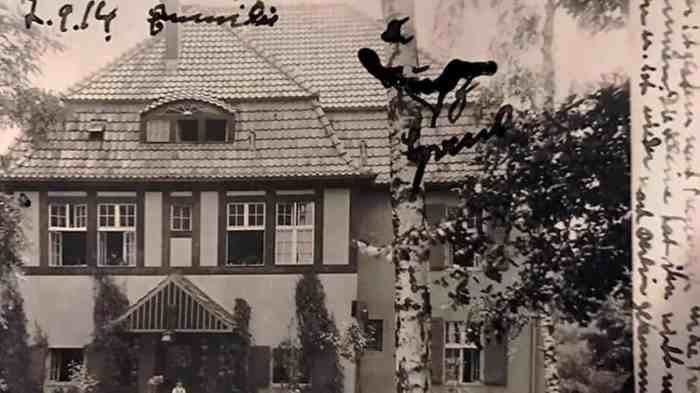
The Wannsee Conference, a clandestine meeting of high-ranking Nazi officials, culminated in a protocol outlining the systematic extermination of European Jews. This document, often referred to as the Wannsee Protocol, is a chilling testament to the planning and meticulous organization of the Holocaust. It reveals the bureaucratic nature of the genocide and the lengths to which the Nazis went to conceal their actions.The Wannsee Protocol laid out the framework for the “Final Solution,” a euphemism for the genocide of European Jews.
The meeting solidified the plan to deport Jews to extermination camps, where they would be murdered. It marked a pivotal moment in the Holocaust, shifting from earlier, less systematic forms of persecution to a fully orchestrated and industrialized extermination process.
Content of the Wannsee Protocol
The Wannsee Protocol detailed the logistical aspects of the “Final Solution.” It emphasized the importance of efficiency and secrecy in the extermination process, outlining the methods and responsibilities of various government agencies. The document wasn’t a mere statement of intent; it was a blueprint for action, specifying roles, responsibilities, and timelines for the extermination.
Operationalization of the Plans
The Nazi regime relentlessly pursued the plans Artikeld in the Wannsee Protocol. The extermination camps, like Auschwitz-Birkenau, were meticulously constructed and equipped to facilitate mass murder. Rail lines were utilized to transport Jews from across Europe to these death camps, a grim testament to the scale and scope of the genocide. Local authorities and collaborators were instrumental in identifying and rounding up Jewish individuals and families.
The efficient bureaucratic machinery of the Nazi state played a crucial role in implementing the plans.
Implications for Victims and the Future
The implications of the Wannsee Protocol for the victims are devastating. Millions of innocent people were targeted and murdered, their lives extinguished in a systematic and horrifying manner. The protocol’s legacy extends beyond the victims’ immediate suffering; it serves as a stark reminder of the dangers of unchecked hatred, prejudice, and the potential for genocide. The Holocaust underscores the importance of vigilance against totalitarian ideologies and the crucial role of human rights protections.
Key Points of the Protocol
| Action | Target | Outcome |
|---|---|---|
| Deportation of Jews to extermination camps | European Jews | Systematic extermination of millions |
| Centralized bureaucratic organization | Nazi administration | Efficient implementation of the “Final Solution” |
| Secrecy and concealment of operations | International community | Successful concealment of the genocide for a period |
| Collaboration with local authorities and collaborators | Local populations | Identification and removal of Jews from their homes and communities. |
The Wannsee Conference and its Aftermath
The Wannsee Conference, a chilling meeting of Nazi officials, finalized plans for the systematic extermination of European Jews. This meticulously orchestrated genocide, later known as the Holocaust, had profound and devastating consequences for millions. The immediate aftermath saw a flurry of activity, with the implementation of these plans across occupied Europe. The ripple effects of this horrific decision would continue to shape the 20th century and beyond.The conference marked a critical turning point in the history of Nazi Germany.
The decisions made within the confines of the Wannsee villa would lead to the deaths of millions and forever scar the collective memory of humanity. The brutality of the Nazi regime reached its apex with the implementation of the Final Solution.
Immediate Reactions to the Conference
The Wannsee Conference itself did not generate immediate public outcry. The participants were well aware of the sensitive nature of the plans, and their discussions were shrouded in secrecy. However, whispers and rumors about the “Final Solution” began circulating among those who knew of the conference’s purpose. The initial response, therefore, was largely one of fear and silence among the targeted populations.
The sheer scale of the planned extermination, and the calculated nature of the Nazi machinery, left many in a state of profound helplessness.
Impact on Various Groups in Europe
The impact of the Wannsee Conference reverberated across Europe, disproportionately affecting Jewish communities. Jewish individuals, families, and communities across Nazi-occupied territories faced immediate threats, including forced relocation to ghettos, denial of basic rights, and eventually, deportation to extermination camps. Non-Jewish Europeans, including political dissidents, Roma, homosexuals, and disabled individuals, also became targets of Nazi persecution. The systematic nature of the persecution and the fear of reprisal instilled a climate of fear and oppression throughout Europe.
Long-Term Consequences of the Conference’s Decisions
The long-term consequences of the Wannsee Conference are immeasurable. The Holocaust left an indelible mark on the 20th century, influencing international relations, humanitarian efforts, and the development of human rights. The systematic extermination of millions led to profound psychological trauma for survivors and their descendants, impacting generations. Furthermore, the conference’s legacy spurred the development of international cooperation in preventing future atrocities.
The House of the Wannsee Conference, a sobering reminder of a dark chapter in history, often gets overlooked in favor of brighter travel destinations. But while planning your trip to experience the vibrant religious processions of Semana Santa in Spain, consider visiting this crucial site. A deep dive into the horrors of the conference requires a significant amount of reflection, but understanding such events is vital for appreciating the nuances of history.
A fantastic guide to Semana Santa Spain will help you navigate the cultural richness of the region, guide to Semana Santa Spain , and this important historical site provides a sobering contrast. Ultimately, both journeys are profoundly important in their own ways, enriching our understanding of humanity.
The creation of the United Nations and the establishment of international criminal courts are direct responses to the horrors of the Holocaust.
Comparison of Responses from Different Countries and Groups
Responses to the unfolding genocide varied greatly among European nations. Some countries, such as Denmark, displayed acts of extraordinary resistance, saving thousands of Jews. Other nations, either through apathy or active complicity, failed to offer significant resistance to the Nazi regime’s atrocities. The responses varied depending on the prevailing political climate and the strength of anti-Nazi sentiments within each nation.
Within the Jewish communities, responses ranged from organized resistance to individual acts of defiance and survival.
Timeline of Events Following the Wannsee Conference
| Date | Event |
|---|---|
| January 20, 1942 | Wannsee Conference |
| Early 1942 – 1945 | Implementation of the Final Solution across Nazi-occupied Europe; establishment and operation of extermination camps |
| 1943 – 1945 | Increased resistance efforts by various groups in occupied Europe |
| 1945 | End of World War II and liberation of concentration camps |
| Post-1945 | Trials of Nazi war criminals, establishment of international organizations dedicated to preventing genocide |
The Legacy of the Wannsee Conference
The Wannsee Conference, a meeting of high-ranking Nazi officials in 1942, remains a chilling testament to the calculated planning and execution of the Holocaust. The conference solidified the systematic extermination of European Jews and other targeted groups. Its legacy continues to reverberate through history, shaping international relations and inspiring ongoing discussions about human rights and the prevention of genocide.The conference’s impact is not limited to the immediate aftermath.
The House of the Wannsee Conference holds a grim historical significance. It’s a sobering reminder of dark times, but let’s be honest, sometimes you need a sturdy cooler to keep those picnic memories cool. If you’re looking for the best coolers with wheels best coolers with wheels to keep your snacks fresh at a historical site, you might want to consider this.
After all, even somber historical locations deserve a well-equipped picnic! The house itself, however, is a powerful reminder of the horrors of the past.
The meticulous planning and bureaucratic implementation demonstrated at Wannsee serve as a stark warning about the dangers of unchecked power and the potential for dehumanization when individuals and institutions fail to act against oppression. This historical event continues to inform discussions about ethical responsibility, historical memory, and the need for vigilance against future atrocities.
Lasting Impact on International Relations
The Wannsee Conference exposed the failure of international diplomacy and the inadequacy of pre-war responses to the escalating Nazi regime’s atrocities. The conference’s meticulous planning and bureaucratic execution highlight the dangers of unchecked power and the potential for dehumanization. The world’s failure to effectively counter Nazi aggression had profound implications, contributing to the catastrophic scale of the Holocaust.
This event underscored the importance of international cooperation and the establishment of institutions like the United Nations, which aim to prevent future genocides.
Ethical Implications of the Wannsee Conference
The Wannsee Conference epitomizes the ethical abyss of human cruelty. The meticulous planning, bureaucratic implementation, and deliberate dehumanization of targeted groups reveal the moral bankruptcy of the Nazi regime. The conference’s participants actively participated in the systematic extermination of millions. The ethical implications are profound, emphasizing the imperative for individuals and institutions to act against oppression and the importance of moral courage in the face of atrocities.
The conference continues to serve as a stark reminder of the devastating consequences of indifference and inaction in the face of human rights violations.
Historical Analyses of the Conference’s Significance
Numerous historical analyses underscore the critical role of the Wannsee Conference in shaping our understanding of genocide and the importance of preventing future atrocities. These analyses often focus on the bureaucratic processes employed by the Nazi regime, the dehumanization of targeted groups, and the role of silence and complicity in enabling atrocities.The conference’s planning illustrates the chilling efficiency of the Nazi regime in orchestrating the Holocaust.
Historians emphasize the conference’s importance in exposing the devastating consequences of unchecked power, the fragility of democratic institutions, and the imperative for vigilance in the face of emerging threats to human rights. Contemporary analyses often compare the conference’s planning to modern instances of mass violence and oppression, highlighting the need for ongoing vigilance against similar atrocities.
Examples of Ongoing Influence
The Wannsee Conference’s influence continues through contemporary discussions on genocide prevention. International human rights laws and the establishment of institutions dedicated to protecting vulnerable populations are direct responses to the horrors revealed at Wannsee. The conference’s legacy inspires efforts to address systemic injustices and promote human dignity worldwide.Furthermore, the conference serves as a cautionary tale in modern political discourse.
The methodical planning and bureaucratic implementation of the Holocaust underscore the need for vigilance against the insidious nature of dehumanization and the dangers of unchecked power. The conference’s impact extends to ongoing discussions about the responsibility of individuals and institutions in preventing future atrocities. This is exemplified by contemporary debates about international intervention and the role of the international community in responding to human rights violations.
Visual Representations of the Wannsee Conference
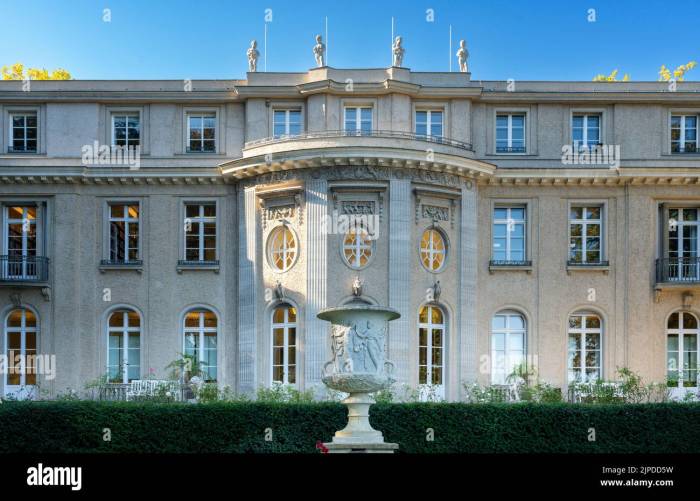
The Wannsee Conference, a pivotal meeting in the Holocaust’s planning, remains shrouded in historical ambiguity despite extensive documentation. Visual representations, though scarce, offer crucial insights into the atmosphere and participants of this fateful gathering. They serve as tangible reminders of the human cost of unchecked hatred and the importance of remembering such events.
A Detailed Description of a Historical Photograph, House of the wannsee conference
A photograph of the Wannsee Conference is notoriously absent. While records exist of the meeting, no readily available photograph depicts the interior of the conference room or the participants. This lack of visual documentation underscores the deliberate efforts to conceal the conference’s true purpose and the subsequent atrocities planned.
Alternative Visual Representations
Understanding the Wannsee Conference requires moving beyond the absence of a single defining image. Alternative visual representations, such as maps, illustrations, and symbolic imagery, offer a deeper understanding of the conference’s context and its long-lasting impact.
| Image | Caption | Description |
|---|---|---|
| A map of Berlin, Germany, centered on the location of the Wannsee Villa. | Location of the Wannsee Conference | A detailed map of Berlin, Germany, pinpointing the Wannsee Villa, the site of the Wannsee Conference. The map highlights the villa’s location relative to other significant landmarks and major thoroughfares, illustrating the geographical context of the event. The precise address and surrounding neighborhood are clearly marked, allowing for easy visualization of the conference’s setting within the urban environment. |
| An illustration of a stylized conference table with silhouettes of the participants. | Participants at the Wannsee Conference | A symbolic illustration of a conference table. The table is centrally positioned, surrounded by stylized figures representing the conference attendees. The figures are not portraits but rather abstract representations, conveying the anonymity and detachment that characterized the meeting’s planning process. Each figure’s posture might be subtly different, hinting at varying degrees of involvement or unspoken tension within the group. The table itself might be depicted with a specific, somewhat imposing design, emphasizing the formality of the gathering and the weight of the decisions being made. |
| A symbolic image of a broken mirror or shattered glass. | The Fragmented Future | A symbolic image of a broken mirror or shattered glass. The shards of glass represent the irreparable damage caused by the decisions made at the Wannsee Conference. The fractured nature of the image symbolizes the irrevocably fractured future of Europe and the shattered lives of countless individuals. The image highlights the catastrophic consequences of the decisions made in the conference room. |
Wrap-Up
In conclusion, the Wannsee Conference stands as a stark reminder of the dangers of unchecked hatred and the importance of vigilance against such ideologies. The legacy of this meeting continues to shape our understanding of human rights and international relations. Through meticulous research and insightful analysis, we gain a deeper understanding of the devastating consequences of the conference and the enduring need to remember the past to prevent its repetition.
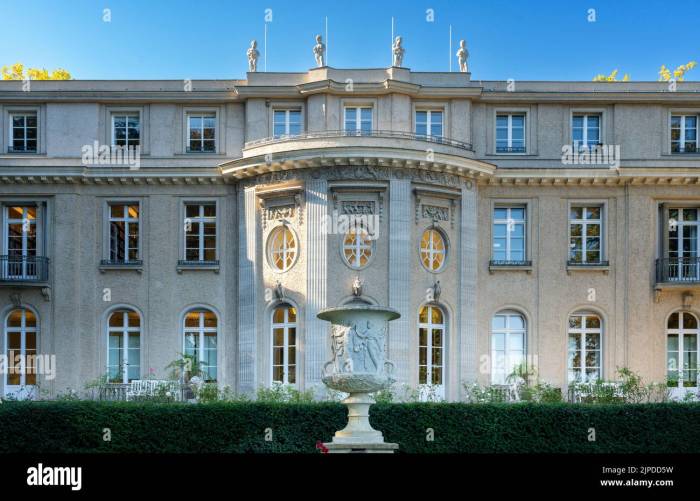






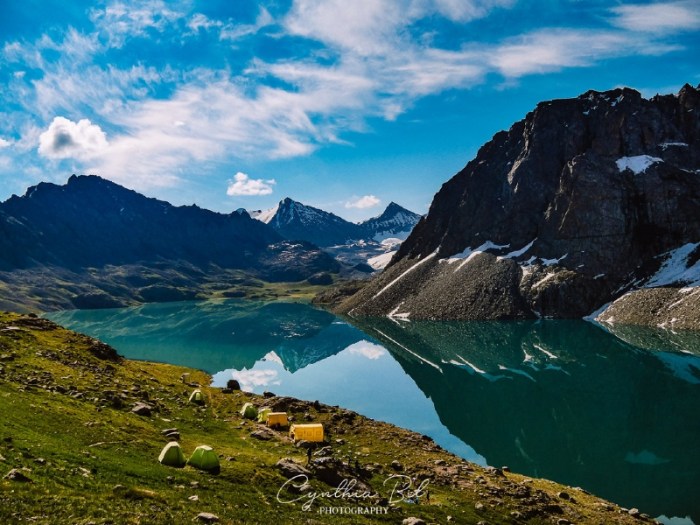
![The 23 BEST Things to Do in Kyrgyzstan [2024 Update] Kyrgyzstan soviet union towns](https://whatvis.com/wp-content/uploads/2025/06/Things-to-do-in-Kyrgyzstan-1.jpg)
